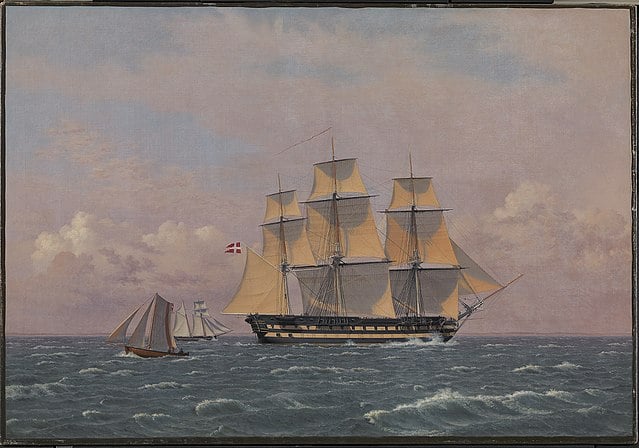
Danish painters from the mid-1800s might have found value in what others considered trash from beer breweries. A recent study published in Science Advances reveals that the foundation of various paintings made during that time in Denmark contains traces of cereal grains and brewer’s yeast.
Brewer’s yeast is a common by-product of the beer brewing process. This discovery suggests that artists could have utilized these leftover materials to prepare their canvases.
According to Cecil Krarup Andersen, a conservator at the Royal Danish Academy in Copenhagen, historical records indicate that Danish house painters occasionally used beer to make shiny and ornamental paint. However, it has never been documented that yeast and cereal grains were used in the preparation of primer, which is the base layer applied to canvases before painting.
Artworks from the Danish Golden Age
While examining artworks from the Danish Golden Age, a remarkable period of artistic brilliance in the early 19th century, Cecil Krarup Andersen conducted research at the National Gallery of Denmark.
Andersen emphasizes the importance of comprehending the chemical makeup of these paintings in order to effectively preserve them.
As part of her investigation, Andersen and her fellow researchers analyzed ten pieces created by renowned Danish painters Christoffer Wilhelm Eckersberg, often regarded as the pioneer of Danish painting, and his protégé Christen Schiellerup Købke.
Thanks to canvas trimmings obtained during a previous conservation endeavor, researchers were able to conduct a thorough analysis that would have otherwise been impossible, as the usual sampling process is destructive.
Analysis of the paintings
The analysis revealed the presence of proteins from Saccharomyces cerevisiae, a type of yeast commonly used in beer fermentation, in seven of the paintings. Additionally, combinations of proteins derived from wheat, barley, buckwheat, and rye, all of which play roles in the process of brewing beer, were also detected.
The researchers conducted tests on a new type of primer they developed using leftover yeast from contemporary beer brewing. The experimental primer demonstrated excellent cohesion and created a durable painting surface, which is a crucial function of a primer.
Surprisingly, this mixture outperformed another primer made solely with beer, indicating its superior efficacy.
The Danish "Golden Age" painter Wilhelm Marstrand created this portrait in the summer of 1857 in Frederiksberg Garden in Copenhagen. The painting features Justina, a black nanny from Saint Thomas in the Danish West Indies, flanked by her two charges Emily and Annie Marstrand, who… pic.twitter.com/mxsPEHHBzG
— Fashioning the Self in Slavery and Freedom (@FashioningSelf) March 23, 2023
Significant status of the beer
During the 1800s in Denmark, beer held a significant status as the most popular beverage, often regarded as a precious commodity akin to liquid gold. This was mainly due to the fact that water required treatment before it could be safely consumed, and the brewing process effectively fulfilled that purpose.
Consequently, a substantial amount of residual yeast would have been readily accessible for artists to acquire, as noted by the researchers.
According to Andersen, if traces of the beer by-product are discovered in paintings by other artists, it would greatly assist conservators in enhancing the preservation of these artworks. Furthermore, it would provide valuable insights into the lives and artistic techniques of the painters.
See all the latest news from Greece and the world at Greekreporter.com. Contact our newsroom to report an update or send your story, photos and videos. Follow GR on Google News and subscribe here to our daily email!



